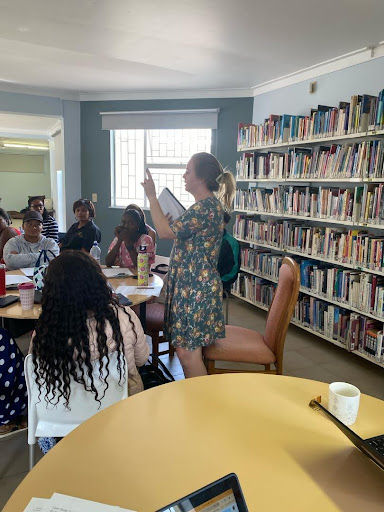Explicitly Teaching Writing: Visiting Literacy Consultant Stephen Graham
- Windhoek International School
- Sep 8, 2023
- 3 min read
Dear WIS Community,
“We never stop learning language, from when we start to talk in the early years and our first attempts at writing, through to essays in secondary school, and then beyond to the new demands of adulthood, where we still continue to learn and refine the language needed in every situation in which we find ourselves. We learn through language and language is central in the learning process. We could virtually say that language is the curriculum. As we learn language, we develop a relatively unconscious, implicit understanding of how it works. If we make these common-sense understandings explicit, we can use them to help us in the classroom.”
Derewianka, Beverly. Understanding How Texts Work. Primary English Teaching Association, 2020.
What’s the text type we are looking at? What’s its job? What are the three-time connectives we are learning about? These types of questions could be heard on the WIS campus this week as our visiting Literacy Consultant Stephen Graham visited classrooms from Early Years to Grade 12 to do in -class demonstrations of literacy teaching.
The English language, whether spoken, or written, is made up out of a series of predictable functions or texts that enable us to do things- for example, to share information, to enquire, to express attitudes, to entertain, to argue, to reflect, to construct ideas. Most texts are in hybrid form, but if we teach children the texts types in their most basic form, in a progression throughout the years of schooling and across different subjects, we are giving students the skills and understandings necessary to be literate, to be effective communicators and to be successful at the tasks we ask them to do as part of their learning at school.

Understanding how texts work, is what being literate is. A text has a purpose; its job can be to persuade, inform, entertain or instruct. It also follows a general structure and has specific grammatical features. Teaching literacy is helping students understand how all the elements work together to make meaning.

In the video below, Mr. Graham is modelling a description to Early Years 3 students. He has used the describing bubble (a tool to prompt students) to construct sentences with the children about a plant. As he is doing this, he is getting them to practise the grammar, structure and purpose of a description, a text that is used ubiquitously at school and often embedded within other texts.
There is a lot of pedagogy at play in the video. Research shows that learners need lots of speaking practice, i.e. they need to say and hear language structures lots of times and feel successful at saying them, in order to eventually put them in writing. Learners also need a teacher to model and move them along the continuum towards more complex language. For example, if a student keeps using ‘next’, and is ready for more complex vocabulary, the teacher might introduce the word ‘subsequently’. The children are doing cognitively demanding work and are learning metalanguage, a language to talk about language. This metalanguage is developed across the school curriculum and gets more complex as the years of schooling progress.
Literacy does not happen by osmosis. As teachers, we need to expose learners to different types of text, model them extensively, break them down for students and provide plenty of practice in reading, writing and speaking. Stephen Graham was at WIS this week to show us how to do that in a way that truly engages children.
We have had tremendously positive feedback from teachers and most of all students. One thing we heard many teachers say this week is ‘I wish someone had taught me this when I was at school!’. If your child was involved in a literacy lesson demonstration- please ask them about how a text is constructed!
Warm regards,
Marcelle van Leenen
Primary Principal
















Comments